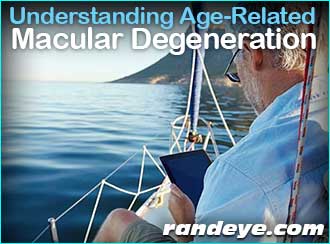The macula consists of millions of light-sensing cells which provide sharp, central vision.
The Macula is the most sensitive part of the retina and is located at the back of the eye. The retina turns light into electrical signals and then sends these electrical signals through the optic nerve and then it reaches the brain. Here they are translated into images that we see.

So What is Age- Related Macular Degeneration?
Age-related Macular Degeneration (AMD) is a common eye condition and one of the leading cause of vision loss among people age 50 and older.
AMD is caused by damage to the macula, and can result in blurred, dark and distorted vision.
In some people, AMD advances slowly so vision loss does not occur for a long time.
In other people, the disease can cause damage way faster and vision loss in one or both eyes, is likely to occur.
Am I at Risk for AMD?
Age plays a very big role in age-related Macular Degeneration.
The disease is more likely to occur after the age of 60.
Other risk factors include:
- Smoking- Research has proven that smoking can double the risk for this disease.
- Race- It is more common in Caucasians then in African Americans or Hispanic/Latinos.
- Family History- People with a family history are at much higher risk.
- Obesity- Severely overweight individuals have an increased risk of developing AMD.
If you or a loved one is experiencing signs of macular degeneration, it is recommended that you have a complete eye exam as soon as possible, to minimize loss of vision.
